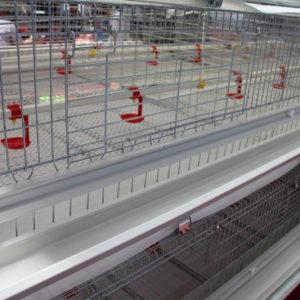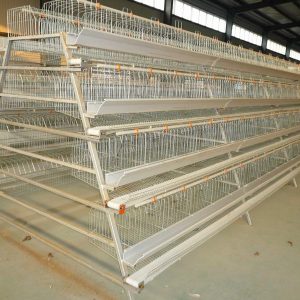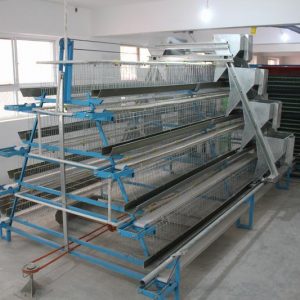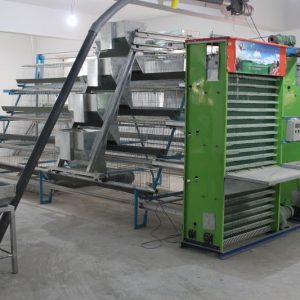
Analysis of low feed intake of broilers and control measures
In the breeding process of broiler chickens (including 817), such a phenomenon generally exists, low feed intake or long-term no increase in feed, generally occurs at 10-25 days of age, this phenomenon has a tendency to occur in advance. The main clinical manifestation is that the feed intake is not up to standard. In severe cases, it is about 30% lower than the standard feed intake, the respiratory tract is not obvious, the coat is dark, some hairs are tied, and the stool is not formed. There are no special clinical manifestations, the mortality rate is not high, and some chicken flocks hardly die. Farmers and some technicians have adopted various methods to increase food and the effect is not obvious. Most clinical technicians think that it is the cause of gastroenteritis, but the effect of the medicine for gastroenteritis is not satisfactory, causing great economic loss.
Necropsy symptoms
1. Liver enlargement, color aggravation, liver atrophy, color darkening, some liver hemorrhage, renal enlargement, pericardial effusion.
2, glandular stomach swelling, glandular gastric mucosa swelling, congestion; muscular gastric endometrium ulcer, necrosis.
3, duodenal congestion, jejunum, flat ileum, no food in the intestine, and some have gas and swelling.
4. Thymus, atrophy, hyperemia, bursa atrophy.
[Etiological analysis of low broiler feed intake]One, the quality of chicks
Recently, the price of chicken fry has been extremely high. The hatchery has reduced the quality of chicken fry. Infections such as salmonella (pullaria) and Escherichia coli often occur in chicks.
2. Feeding management issues
1. The temperature is too high
Birds have thick feathers and no sweat glands, and are highly susceptible to high temperatures. As the temperature rises, the chicken body begins to expand blood vessels to allow blood to reach the comb, beard and feet to enhance heat dissipation. The blood flow through the gastrointestinal tract decreases, gastrointestinal peristalsis slows down, and the chicken feed intake decreases. The suitable temperature for chicken is 20~23℃.
2. Poor ventilation or excessive negative pressure
Poor ventilation or excessive negative pressure causes hypoxia in the chicken coop, causing the chickens to become mentally depressed and reduce their food intake.
3, the density is too large
4. Fewer feeding times, no empty tank time or shorter time.
Three, liver and kidney failure
During the breeding process, farmers and grass-roots technicians pay attention to the prevention and treatment of respiratory diseases and E. coli, and use a large number of antibiotics, including some prohibited drugs (Lijunjing, etc.), which increases the burden on the liver and kidney organs and severe hepatomegaly , Liver rupture, liver necrosis, kidney enlargement, renal hemorrhage and other diseases. Mold is a common but difficult problem. The accumulation of mycotoxins causes necrosis of the liver and kidneys.
Four, atypical virus disease
1. Viral colds (including colds)
2. Atypical Newcastle Disease:
3, recessive bursa of fabric:
The recessive bursa of Fabricius is often ignored in the breeding process. The recessive bursa of Fabricius causes long-term respiratory tract and low feed intake in chickens. If ignored, the treatment effect is often not obvious in the process of medication.
Solution: Banqing Baidu Oral Liquid (300 kg of water/bottle) + Reganqing (500 kg of water/bottle), intensive drinking water for 6-8 hours throughout the day for 4 days. This program has a significant effect on the recessive bursa of fabric.
Five, intestinal coccidia, enterotoxic syndrome
Enterotoxic syndrome is a multifactorial enteritis syndrome caused by coccidia, some viruses, bacteria, and other predisposing factors. The clinical symptoms are diarrhea, undigested feed in feces, significantly reduced feed intake, slow growth, weight loss, and Dehydration is the characteristic; solution: Qiulixin (300 kg water/bag) + Dimenidazole premix (300 kg water/bag), intensive drinking water for 6-8 hours throughout the day, continuous use for 4 days.
Qiu Lixin selects highly targeted and active microecological strains to quickly eliminate coccidia at various developmental stages in the intestines, and is compatible with Dimenidazole premix to perfectly solve intestinal problems.
Six, glandular gastritis
There are many factors that cause adenomyoma gastritis, including the environment, bacteria, the addition of new corn, Mycoplasma synovialis, mold and so on. Mycotoxins cause degeneration and necrosis of the liver, kidneys, and pancreas, erosion of the gizzard corneum, damage to the glandular stomach and intestinal mucosa, imbalance of intestinal flora, indigestion, and diarrhea. Mycoplasma synovialis caused swelling of the glandular stomach in the early stage, leading to a decrease in feed intake. After 3 weeks of age, paralyzed chickens appeared one after another, which seriously affected production performance.
Seven, stress response
There are many stress hazard factors in the early feeding process of chicks, such as picking up chicks, expanding the group, immunity, feeding, and excessive density. The stress reaction can cause gastrointestinal dysfunction and flora imbalance, which will affect the normality of the gastrointestinal tract. Digestive function.
【Prevention】
1. Choose high-quality chicks and keep the mouth shut.
Enrofloxacin solution (4000 birds/bottle/day) + Weishu (20,000 birds/bag/day) for 5 days.
Enrofloxacin solution quickly removes Salmonella, Escherichia coli and Mycoplasma from the body, Weishu removes mycotoxins from chickens, promotes liver development, prevents gastroenteritis, and prevents respiratory tract. This program has been applied in a large number of practices, which can greatly increase the rate of healthy chicks.
2, do a good job in temperature and ventilation management
High temperature and low humidity are forbidden (the brooding temperature is 33°C, 3 days down 1°C, gradually decreasing), reasonable ventilation, do not sacrifice ventilation for heat preservation, increase the number of feedings, do not add too much at one time, the digestive ability of chickens is poor, eat Oversatisfaction can easily cause indigestion and affect the utilization rate of feed. Calculate the daily amount of feed and divide it equally according to the number of feedings. Reasonably empty the tank, and resolutely do not allow feeding on the material.
3. Pay attention to the use of feed
Changing the feed may cause digestive disorders, causing indigestion, diarrhea, etc., affecting the growth and feed utilization of broilers.
It is recommended to add Changkang (1000 kg water/bag) + Pushuang (1500 kg water/bottle) during the refueling period to regulate the intestinal tract, promote the increase of beneficial bacteria, repair the intestinal mucosa, and promote the growth of intestinal villi.
4. Removal of mycotoxins and health care of liver and kidney
For mold, we not only need to adsorb, but also need to remove the mycotoxin produced by mold in the body, repair damaged liver cells, and restore liver and kidney function.
Weishu (1000 kg water/bag) or Poria extract (400 kg water/bottle) for 4 days.
can effectively remove mycotoxins from the body, promote the growth of liver cells, repair damaged liver cells, protect liver and kidney, and enhance liver and kidney function.
5. Prevention and treatment of glandular gastritis and enterotoxin syndrome
Gastrointestinal gastritis and enterotoxic syndrome cause chicken gastrointestinal pain and poor digestion. During treatment, it is necessary to relieve pain, anti-inflammatory, eliminate toxins, and promote food intake.
Xiankang (400 kg of water/bag) can quickly relieve pain, inhibit inflammatory exudation, eliminate inflammation, repair gastrointestinal mucosa, and quickly increase feed intake. 6. Strengthen feeding management and reduce stress



